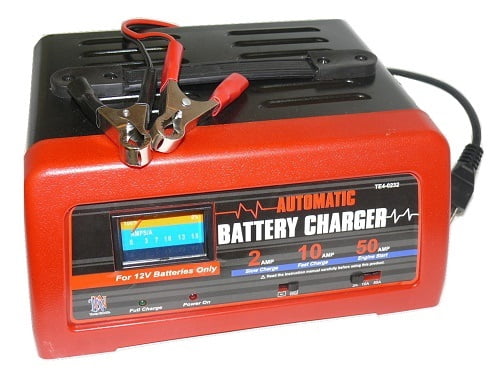

Battery chargers will charge a battery based on.
Car battery charger use manual#
Your vehicle should be charged and ready to go. Before charging your battery, refer to your owners manual and your battery charger manual for instructions. Make sure you disconnect the negative lead first, then the positive lead last.Īnd that’s it. Keep a close eye on the charger, and once your battery is fully charged, switch the charger off and disconnect it from the mains.

Ensure the charger is situated away from the battery and switch the charger on to commence charging. Always connect the black negative (-) lead to the negative (-) terminal on the battery last. Some manufacturers may advise disconnecting the battery during charging, so always check your owner’s handbook before you continue and follow their recommendations.Įnsure the charger is switched off, then you should connect the red positive (+) lead to the positive (+) terminal on your battery. With that prep work done, you can now connect your charger to the battery. If not, clean the terminals before charging, as this helps to ensure a good connection. If your vehicle has Stop/Start Technology, it will be fitted with either an EFB (Enhanced Flooded Battery) or an AGM battery (Absorbent Glass Mat), so you’ll need a smart charger to charge these types of battery safely.īefore you start charging, ensure the battery terminals are clean and free from corrosion. Check your chargerĪlways make sure you’ve read the operating instructions on your specific charger, and make sure that it’s fit for purpose. Thankfully, with a battery charger to hand, it’s not too difficult to do it yourself. It’s also much better for your battery in the long term. Charging your vehicle’s battery is a much more efficient way of keeping your car running than jump-starting it once the battery has gone flat.


 0 kommentar(er)
0 kommentar(er)
